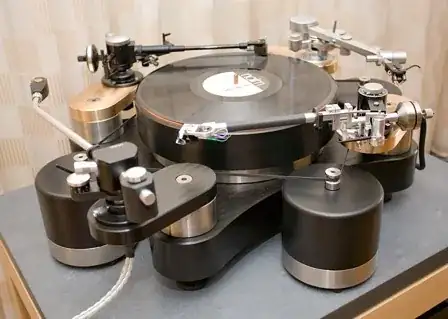I recently got a Technics turntable and the belt that came with it is super crappy and makes the platter hickup when it passes by the seam on the belt. This is not audible, but it got me thinking about ways that I could control the speed of the platter.
Since it is a technics table it has a little strobe and markings to looks at which are awesome, but "totally the 70s". Along with replacing the belt I started thinking about adding some 21st century technology to my turntable.
- Adding an Arduino equipped with a light sensor and a speed controller.
- New brushless motor
- New belt :)
My goal would be to use the light sensor with the markings that the strobe method currently utilizes to give the Arduino a reading of the speed. With that information I would apply a PID algorithm to control the motor that is spinning the platter.
My question is: would this work? And please tell my why this would be a bad idea if not.
